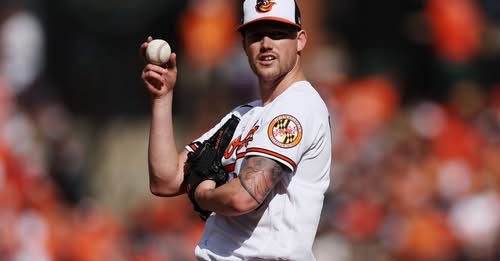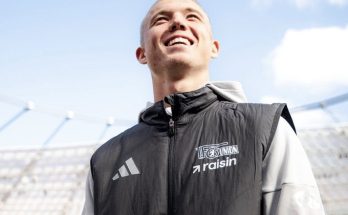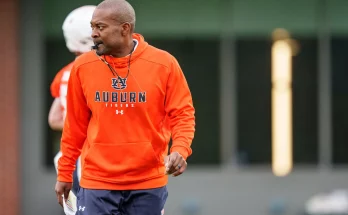Injury‑Plagued Orioles, Already at 60 Players Used in 2025, Poised to Surpass 2021 Record Despite Devastating Setbacks
The Baltimore Orioles’ 2025 season was never supposed to look like this. What began with the promise of contending again in the American League has devolved into a bruising war of attrition, with injuries carving through the roster and forcing a constant churn of players from Norfolk to Camden Yards. With 60 players already used this season—and still weeks to go before the final out—the Orioles are on pace to break the franchise record of 62 players used in a single season, set just four years ago in 2021.
The milestone itself is not one to celebrate. It stands not as a symbol of organizational depth, but of desperation. When the Orioles hit the 62-player mark in 2021, it was a reflection of instability during a rebuild. In 2025, it’s a testament to misfortune. The team has been ravaged by injuries at a stunning rate, and the casualties span all corners of the roster: starters, relievers, outfielders, infielders, prospects, veterans. There’s hardly a position that hasn’t had to be patched and repatched as the season’s grind has continued.
In early August, as if to punctuate the trend, the Orioles reinstated Ryan Mountcastle from the 60-day injured list, only to immediately place two more outfielders—Tyler O’Neill and Colton Cowser—on the shelf. O’Neill’s right wrist, injured in a violent crash into the outfield fence, had already been bothering him, and the latest flare-up forced a pause. Cowser’s injury, a result of a frightening collision, left him in concussion protocol. Both moves came as blows to an offense that was already struggling to find consistency, particularly in the outfield. With those losses, the Orioles turned to Greg Allen, who was called up to provide emergency depth, while Dylan Carlson and Ryan Noda were asked to shoulder more innings and at-bats.
The outfield isn’t alone in its suffering. The pitching staff—once seen as a youthful strength with high upside—has been decimated. Zach Eflin, signed to be a stabilizing veteran force in the rotation, is now out for the season. Chronic back issues led to lumbar microdiscectomy surgery, his third stint on the injured list this year. Félix Bautista, the flamethrowing closer who had returned from Tommy John surgery just in time for Opening Day, made only a handful of appearances before shoulder trouble ended his season as well.
And then there’s Grayson Rodriguez. Once heralded as the next ace of the staff, his season came to a halt after undergoing elbow debridement surgery. Although the procedure isn’t as ominous as full reconstruction, the timing couldn’t have been worse, and it raises long-term concerns about his durability. His absence has left a gaping hole in a rotation that has otherwise relied on question marks and short-term fixes.
In fact, outside of Tomoyuki Sugano, who has been a relative bright spot after signing out of Japan, the Orioles’ rotation has struggled to maintain any consistency. Kyle Bradish and Trevor Rogers were expected to provide mid-rotation value, but injuries and ineffectiveness have limited their contributions. Charlie Morton, brought in as a veteran presence, has shown flashes but can’t shoulder the entire load. The result has been a starting staff that posted the worst ERA in the American League by the end of April and has spent the rest of the season trying to recover lost ground.
Offensively, the issues have compounded. For a team that reached the postseason in both 2023 and 2024, and entered 2025 with playoff expectations, the regression has been startling. As of mid-August, the Orioles rank last in the majors in runs scored since the trade deadline. A once-feared lineup has been reduced to a rotating cast of Triple-A call-ups, replacement-level contributors, and the occasional returning regular trying to shake off rust. With the heart of the order missing in action for large portions of the season—Mountcastle, O’Neill, and Cowser among them—there simply hasn’t been enough production to compete in a loaded American League East.
The Orioles’ front office, to its credit, hasn’t sat idle. As injuries mounted, the team executed a flurry of roster moves in June and July, including waiver claims, minor trades, and internal promotions. But the reality is that no team can withstand the level of attrition Baltimore has suffered. The constant turnover has made it difficult for manager Brandon Hyde to establish rhythm or consistency. Lineups change daily. Pitching plans are rewritten weekly. Roles are in flux. Chemistry is hard to develop when the clubhouse is a revolving door.
And yet, despite the adversity, there are small signs of resilience. The farm system—though no longer the league’s top-ranked after several graduations—continues to produce contributors. Dylan Beavers, once viewed as a high-upside but raw outfield prospect, has shown flashes of maturity at the plate and in the field. Catcher Samuel Basallo, still just 20 years old, has risen quickly through the system and could see his major league debut by season’s end if injuries persist behind the plate. These young players, though not yet ready to carry a team, offer hope for a brighter 2026.
Still, it’s hard to overlook how quickly the Orioles’ competitive window has been compromised. The organization spent years building through the draft and international signings, culminating in a breakout 101-win campaign in 2023 and a postseason return in 2024. But success at the major league level means relying not just on talent, but on health—and in 2025, health has been elusive. The front office now faces critical questions: how to retool a rotation riddled with injuries, how to stabilize an outfield core that’s become alarmingly fragile, and how to ensure that top prospects can graduate to the big leagues without immediately being thrown into crisis scenarios.
Fan frustration has grown, and understandably so. With postseason hopes dashed by midseason, and with injuries stripping the team of star power and continuity, attendance has dipped. The buzz that surrounded the team’s resurgence just two years ago has dulled. Many fans now find themselves watching out of obligation, not anticipation. The team’s inability to score, especially in clutch situations, has made for some long, silent nights at Camden Yards.
The Orioles now approach the final stretch of the season playing not for playoff position, but for pride and evaluation. There is still value in seeing what players like Beavers, Basallo, and others can offer. There is still merit in giving struggling veterans a chance to reset and rediscover their form. And there is certainly long-term importance in managing the recovery timelines of injured stars, ensuring that 2026 begins with a roster closer to full strength.
Whether or not the Orioles end the season with 63, 65, or even 70 players used, that number will hang over the year as a defining symbol. It reflects the chaos, the patchwork management, and the brutal luck that sabotaged what was supposed to be another step forward in a promising era. Few teams can survive that level of instability without taking a step back—and Baltimore has certainly taken one.
But in the ashes of this disjointed season lies a chance to regroup. The core talent still exists. The farm system, though thinned, remains productive. The major league experience gained by young players this year could accelerate their development. And while the free-agent market won’t provide all the answers, it can supplement a roster that has shown it’s only a few healthy pieces away from contention.
The 2025 season will not be remembered for any playoff chase or banner moment. It will be remembered for survival—day-to-day roster maneuvers, unexpected debuts, and the exhaustion that came with constantly plugging holes. In that sense, the record for players used may not just be a statistical footnote. It may be the defining narrative of a team that, for better or worse, refused to fold under the weight of bad fortune.
If they surpass 62 players in the coming days, it will be one more symbol of a season that spiraled. And yet, for those still watching, it’s also a reminder of the unpredictability of baseball, and how even in the bleakest years, the next breakout star—or the next great team—might already be in uniform, waiting for their turn.



